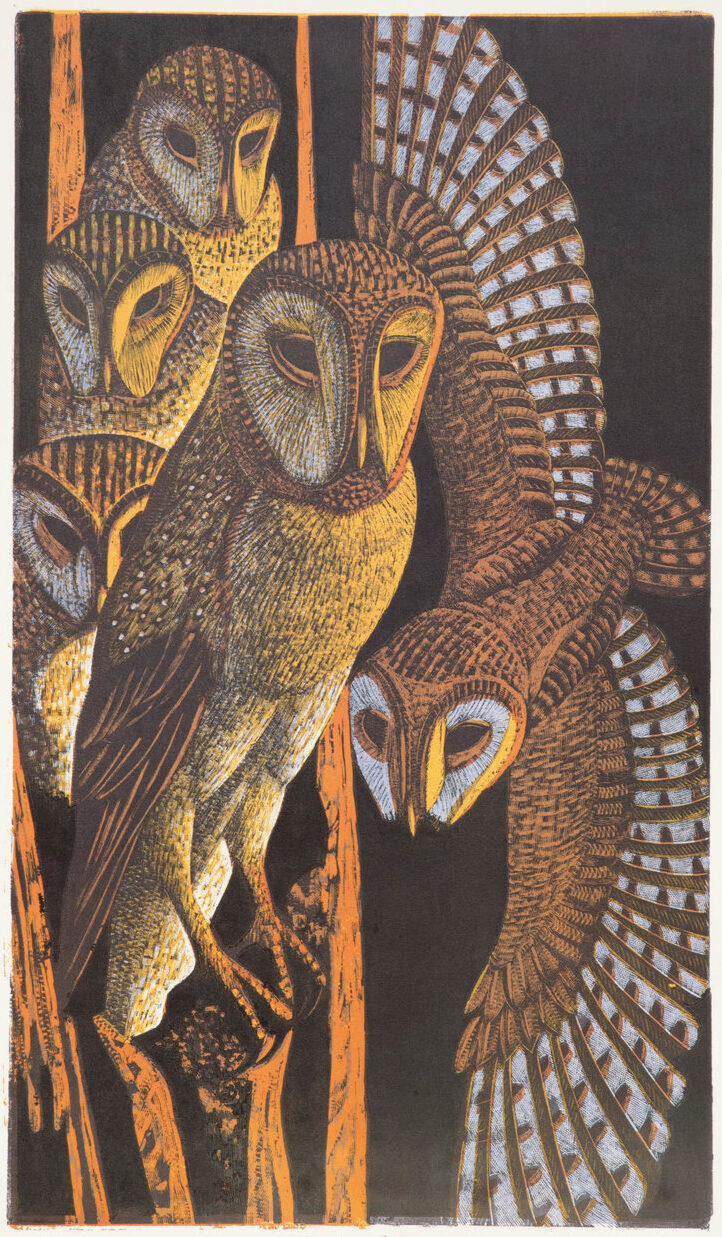
James T.A. Osborne RE 1907–1979
Born at Ninfield, Sussex in January 1907, James T.A. Osborne was the son of a Scottish farmer who migrated to England at the beginning of the century. Throughout his early life he spent much of his time in the surrounding countryside of his parents’ farm, watching and sketching wildlife of every kind. This led Osborne to study at Hastings School of Art, concentrating on sculpture, which he nearly made his career path. During his time at Hastings he won a scholarship to the Royal College of Art where he found that the medium of print suited his creative personality better and in his final year made the switch to the Print School, then under the direction of Malcolm Osborne. His talent was instantly recognised and he went on to gain the highest accolade, the Prix de Rome Scholarship in Engraving.
In 1932 he returned to England and took a position teaching at the Polytechnic School of Art in Regent Street. In 1937 he married the sculptor Charlotte Ellen Gibson (1902−1994), also a Rome Scholar and a fellow of the Royal Society of British Sculptors. For many years they lived together in a house that had been specially designed for artists by Sir John Belcher for the sculptor Sir Hamo Thornycroft at 2A Melbury Road, Holland Park, London W5. In 1946 Osborne was elected an A.R.E (a member of the Royal Society of Etchers and Engravers, now called the Painter-Printmakers) and elected a fellow (R.E) in 1957. He exhibited regularly with the society. His works were exhibited at the Royal Academy Summer Shows twenty-four times between 1936 and 1970. His work was shown throughout regional galleries in the UK and in the US and he was also included within Arts Council touring exhibitions in Europe.
Osborne was a founder member of the SWLA when the Society was formed in 1964, and continued to exhibit at the annual exhibition until his death in 1979.
The first major retrospective of Osborne’s work was held in July 1986 as part of the 25th anniversary of the World Wildlife Fund UK. Harry Eccleston, President of the Royal Society of Painter-Etchers and Engravers said:
“Although I have known and admired individual pieces of Osborne’s work for the past forty years, seeing it all gathered together is a revelation. You are suddenly aware of how much he is following in the great tradition of those British artists who have found their inspiration in animals and birds which surround them: Stubbs, Bewick and more recently Tunnicliffe”.
Osborne’s works are a combination of colour wood engravings, linocuts and silk screens prints, illustrating a range of wildlife, with a special emphasis towards birds. They are bold, interpretive and large scale, rich in colour and detail. Throughout his career, Osborne constantly experimented with all forms of print and paper and his editions never exceeded thirty. The large woodcuts and linocuts are in direct contrast with the small delicate black and white wood engravings of his earlier works.
In addition to the Royal Academy and RWS Galleries in London, exhibitions of Osborne’s work have been held at Reading Museum & Art Gallery (1960), Barton Art Gallery, Tenterden (1986 in association with the World Wildlife Fund) Guild Gallery, London (1987) University of Wales, Aberystwyth (1987) Victoria Art Gallery, Bath (1988) Jane Haler Gallery (1988), Darling Harbour Expo, Sydney Australia (1988) The Burton Art Gallery Bideford, Devon (2014) and Nature in Art (2016).
Osborne’s prints are held in major public collections including The Ashmolean, Oxford, The Victoria and Albert Museum, London, University of Wales Aberystwyth and The Cuming Museum, London.
Osborne’s archive is represented by Emma Mason Gallery.